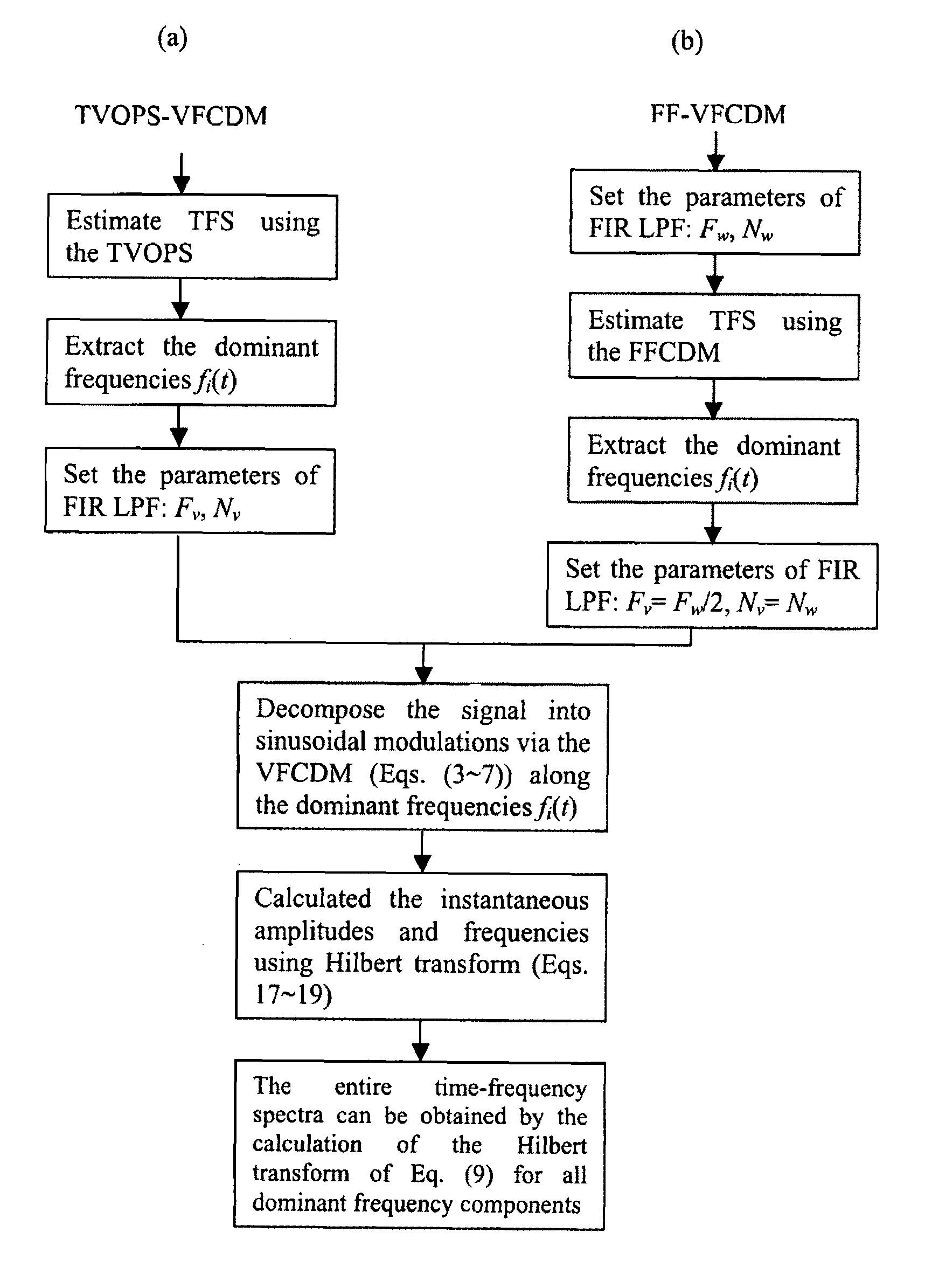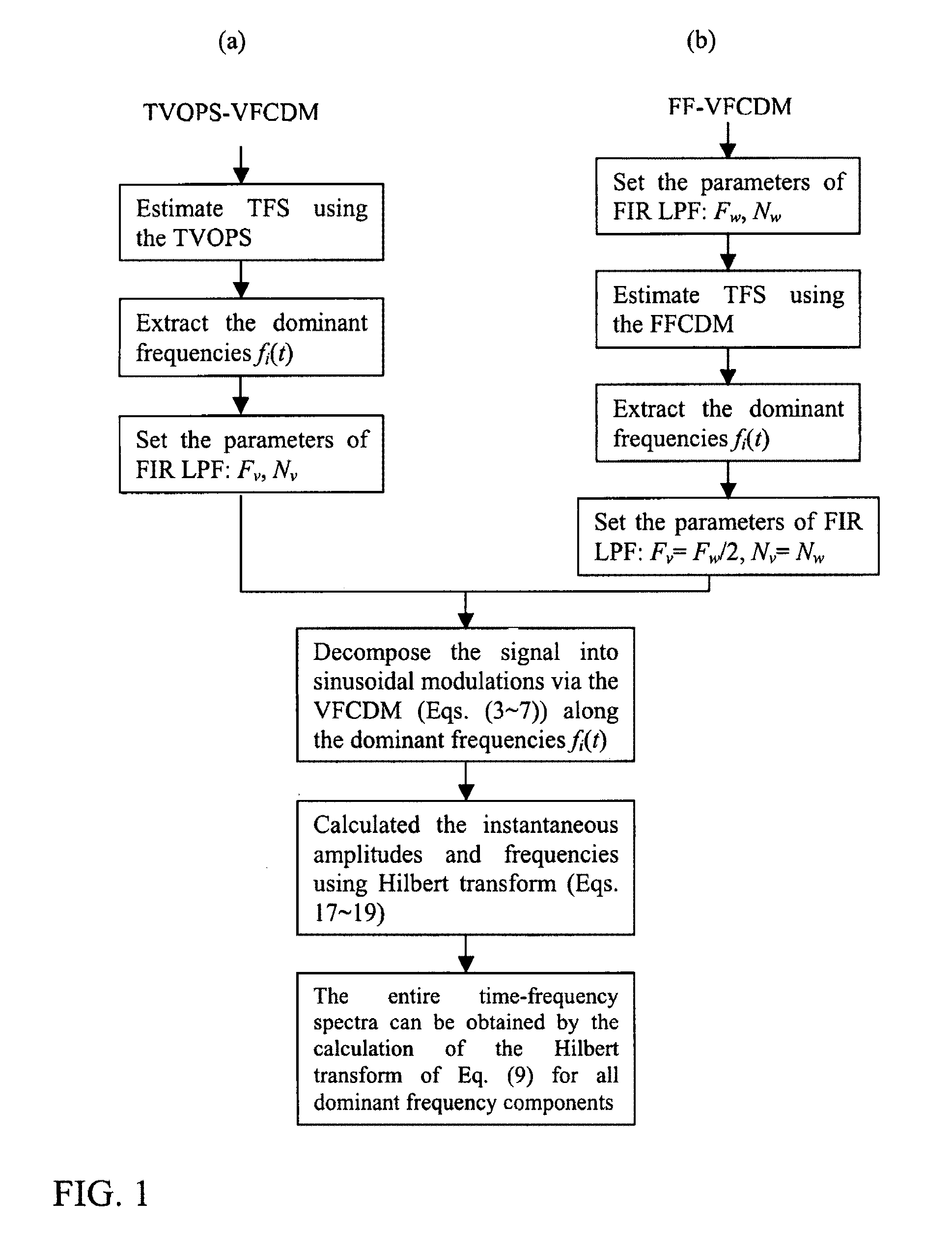Photoplethysmography apparatus and method employing high resolution estimation of time-frequency spectra
a time-frequency spectra and high-resolution technology, applied in the field of photoplethysmography, can solve the problems of difficult detection of modulations, obstructing the patient's use, and requiring a significant amount of maintenance, so as to improve diagnosis and treatment
- Summary
- Abstract
- Description
- Claims
- Application Information
AI Technical Summary
Benefits of technology
Problems solved by technology
Method used
Image
Examples
Embodiment Construction
[0036]A description of detailed construction of preferred embodiments is provided to assist in a comprehensive understanding of exemplary embodiments of the invention. Accordingly, those of ordinary skill in the art will recognize that various changes and modifications of the embodiments described herein can be made without departing from the scope and spirit of the invention. Descriptions of well-known functions and constructions are omitted for clarity and conciseness.
[0037]In regard to complex demodulation methods for estimating TFS, a sinusoidal signal x(t) is considered to be a narrow band oscillation with a center frequency f0, instantaneous amplitude A(t), phase φ(t), and the direct current component dc(t), as in Equation (1):
x(t)=dc(t)+A(t)cos(2πf0t+φ(t)) (1)
[0038]For a given center frequency, instantaneous amplitude information A(t) and phase information φ(t) can be extracted by multiplying Equation (1) by e−j2πf0t, resulting in Equation (2):
[0039]z(t)=x(t)ⅇ-j2π·f0...
PUM
 Login to View More
Login to View More Abstract
Description
Claims
Application Information
 Login to View More
Login to View More - R&D
- Intellectual Property
- Life Sciences
- Materials
- Tech Scout
- Unparalleled Data Quality
- Higher Quality Content
- 60% Fewer Hallucinations
Browse by: Latest US Patents, China's latest patents, Technical Efficacy Thesaurus, Application Domain, Technology Topic, Popular Technical Reports.
© 2025 PatSnap. All rights reserved.Legal|Privacy policy|Modern Slavery Act Transparency Statement|Sitemap|About US| Contact US: help@patsnap.com



